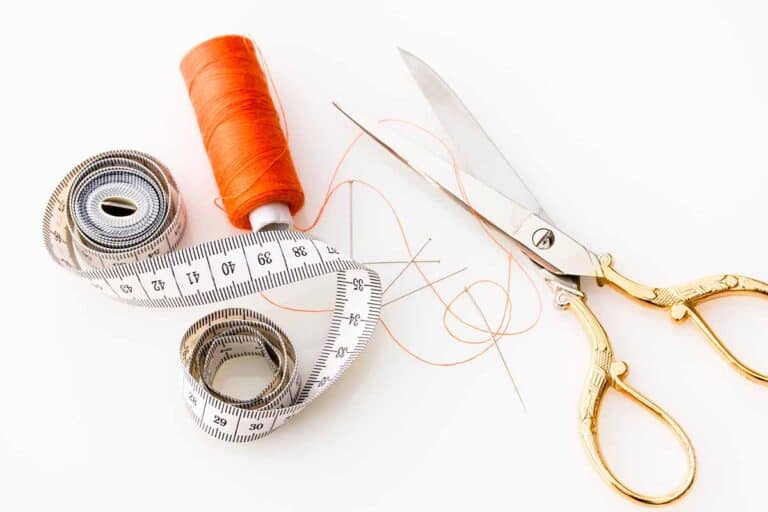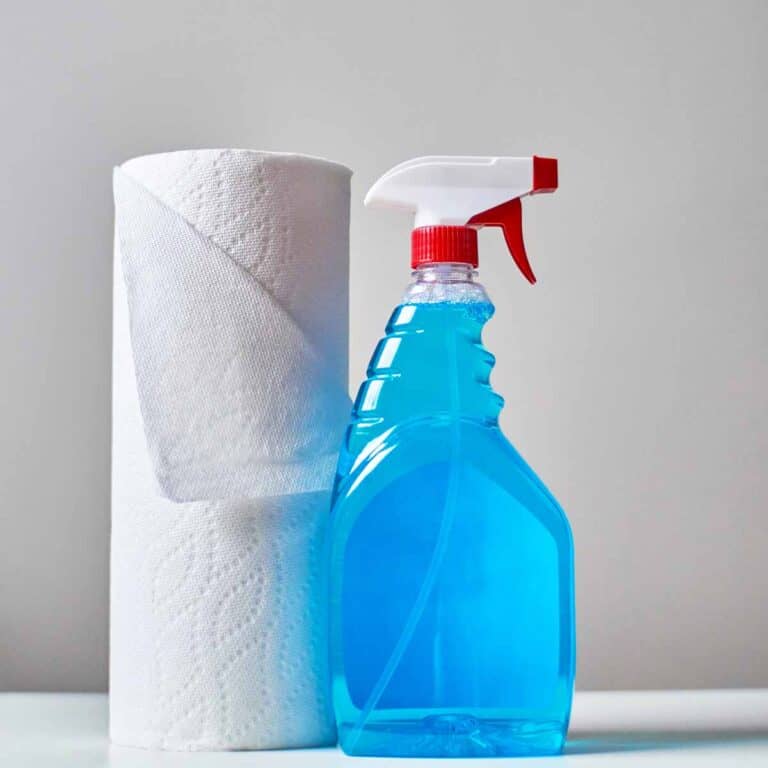5 Steps to Compress Memory Foam Mattresses (Before Moving!)
You invest in a memory foam mattress and enjoy a great night’s sleep – every night. You value your comfort and treasure your mattress.
Now it’s time to move. Space is at a premium. You are thinking of the best way to move a memory foam mattress so you can fit everything in the vehicle.
You remember that your memory foam mattress came packed up small in a box – compressed. You wonder if it is possible to squash it up again.
In the factory, they have industrial equipment – sucking out the air and applying pressure – evenly and firmly. Can you copy that at home?
Yes, with a few simple tools, you can compress your memory foam mattress or almost any foam mattress (without springs) for that matter.
In simple terms, moving a memory foam mattress involves:
- Getting the necessary tools ready for mattress compression
- Compressing the mattress into as thin a layer as possible in a vacuum bag.
- Making the compressed mattress into as compact a form as possible.
- Protecting the mattress in transit.
The details are as follows.
How to Pack and Move Memory Foam Mattress
Before assembling the equipment to compress your mattress, decide if it is worth moving your mattress at all. If your mattress is:
- Old – seven years or more.
- Uncomfortable – lumpy and not restful.
- Torn and dirty.
It is better to move on without it. Invest in a new mattress delivered in a box to your new home.
Next – read your warranty. You may invalidate your warranty if you compress your mattress. Or you can compress, but not roll and keep your warranty.
Not all memory foam mattresses are right for compressing and rolling – any type that contains springs or other internal structures. If the mattress was originally delivered uncompressed, then it probably is not right for compressing and rolling.
Foam Mattress Compression Toolkit
The tools and equipment for a successful compressing of a foam mattress are easy to acquire and inexpensive. The 6 items you need are:
- Vacuum cleaner
An ordinary domestic vacuum cleaner will extract the air with the help of a valve.
- Plastic mattress bag and a small vacuum bag with valve, OR
Most storage and removal companies stock these for mattresses of different sizes. You want heavy-duty plastic.
You are getting a small-sized vacuum bag only for its valve. Vacuum bags in smaller sizes are typically easier to find than larger ones.
You will be cutting out the valve (leaving plenty of plastic around it) and attaching it to the mattress bag.
Remember to check that the valve is the right diameter for your vacuum hose.
*Note: Go for the next option if possible.
- Vacuum bag with built-in valve
Alternatively, if you can get your hands on a ready-made vacuum bag with a built-in valve for your mattress size the job will be simpler.
A mattress bag with a DIY valve from a separate vacuum bag may result in imperfect sealing and thus air leakage causing the mattress to gradually inflate in transit.
- Duct tape
You’d need this to create airtight seals, as well as reinforce plastic seams and hold the mattress roll in place.
- Ratchet tie down straps
Handy for keeping the mattress compressed in transit. These provide useful carrying handles, but it’s possible to omit the straps and use duct tape instead.
You need three or four – one for each end and at least one for the middle of the rolled mattress.
- Box
This is optional but it does provide extra protection. You can buy one after compression to get the right size.
- Helpers
A tag team will make the job easier. Mattresses typically need a couple of people – one to hold down a rolled mattress while the other applies the strap or duct tape.
How to Compress a Memory Foam Mattress (or Any Type of Foam Mattress) – Step by Step
Before starting the process, make sure you have all your supplies in hand and that you have cleared enough floor space to work in.
In addition to your mattress size, allow an additional 2 feet of space around the mattress where possible.
You can also use the same method to pack memory foam toppers and pillows – but individually bag each item.
Step 1: Bag the Mattress
Strip off all the bedding, so you only have the mattress and its protector. Slide the mattress into the mattress bag and lay it flat on the floor.
Step 2: Create the Vacuum Bag (or use a ready-made one)
Cut out the valve from the small vacuum bag leaving plenty of plastic surrounding it.
Cut a hole in the mattress bag to insert the vacuum valve. You are going to roll the mattress like a swiss roll, so position the valve appropriately. Use the duct tape to fix the valve in place and create an airtight seal.
Close the bag and use the duct tape to reinforce all the seams on the mattress bag.
If you have a purpose-built vacuum bag for your mattress size, you can skip the DIY vacuum bag step.
Step 3: Remove the Air
Attach the vacuum cleaner hose to the valve (can use duct tape) and run the vacuum cleaner to suck out the air.
Walking and rolling on the mattress can help to push out more air, effectively make it as thin as possible.
Step 4: Roll the Mattress
Helpers make this process manageable. Leave the vacuum cleaner running because as you slowly roll the mattress towards the valve, more air will flow out.
Slow rolling is better than fast because it extracts the maximum amount of air. Keep the roll tight as you roll the mattress.
When you finish rolling, seal the valve.
Step 5: Strap the Rolled Mattress
Use ratchet straps or duct tape to keep the mattress rolled and compressed. Duct tape (if not using straps) needs to wrap around the mattress role at the ends and in the middle – at least three times in each position.
The mattress is compressed, rolled, and ready to move.
For foam mattresses that are thin enough, you may decide to fold the compressed mattress instead, in which case a box will provide the folded mattress with extra protection.
In order to better understand the process, watch the video below on how a memory foam mattress is compressed and packed in the factory using machines.
Although you’d be doing it by hand, the visualization should make the process a little easier.
How to Move a Memory Foam Mattress
Keeping your mattress in tip-top condition during your move means being careful with how you treat it.
A box for the folded mattress, or an additional heavy-duty plastic cover in the case of a rolled mattress, will add an extra layer of protection.
Any puncture of the vacuumed bag by a sharp object would make the mattress inflate in places and could possibly damage the mattress.
Don’t place the mattress on end – always lie horizontally like an apple strudel. Otherwise, the mattress may not inflate correctly.
You want to keep your foam mattress compressed for the least amount of time – a maximum of two weeks. Ideally, you compress and move on the same day.
Finally, you need to allow between 8 and 24 hours for the mattress to resume its shape. This applies to any type of foam mattress including a memory foam mattress.
Pros and Cons of DIY Memory Foam Mattress Compression
Pros:
- A compressed memory foam mattress is easy to move – makes it possible to travel in a car or small van instead of a removal truck.
- Fewer people needed to handle the mattress – uncompressed mattresses are awkward and bulky.
- The compression process is straightforward and keeps the mattress clean.
- An affordable process that saves space in the removal van – volume matters.
Cons:
- Compression and rolling may invalidate the warranty.
- Recovery time is needed, and that can a night or two of alternative sleeping arrangements.
- Compression is not suitable for long term storage of the mattress between houses.
- The compression process may damage the mattress if it has springs or other support structures inside the memory foam.
Ensure the Job’s Worth the Effort Before Proceeding
Memory foam mattresses like non-stick pans are a surprising spin-off from the Space Race. NASA memory foam (visco-elastic foam) protects astronauts from the brutal force of re-entry into the Earth’s atmosphere.
Its capacity for molding to the body to provide support where you need it makes it a popular component in mattresses, toppers, and pillows.
You can compress your memory foam mattress to make transporting it easier, but it is only worthwhile if space is at a premium, and the mattress is not nearing the end of its useful life.
Other FAQs
How to Move a Heavy Foam Mattress?
Foam mattresses, once compressed, are relatively easy to lift and handle by a single person. But what if your mattress is large and heavy?
Large foam mattresses, especially those of higher quality, tend to have higher-density foam which adds to the overall weight.
Moving a heavy king-sized or a queen-sized foam mattress can be made easier by following these steps:
- Insert the mattress flat on its back into an appropriately sized mattress bag.
- Vacuum the bag as you would for foam mattresses of smaller sizes.
- Continue the vacuuming as you roll the compressed mattress.
- Tighten the roll using ratchet straps or duct tape.
- Use a two-wheeled foldable cart and stand the rolled mattress on it.
- Tie the mattress to the cart, and moving it around is now effortless.
How to Move a Gel Memory Foam Mattress?
A gel memory foam mattress has gel-infused throughout the top layer of foam or a layer of gel beads near the surface. It is designed in response to traditional foam mattresses that tend to sleep warm.
Compressing and moving a gel memory foam mattress isn’t much different from other foam mattresses that do not contain springs. The steps include:
- Inserting the gel memory foam mattress into a vacuum bag as you would a greeting card into an envelope.
- Suck out the air using a vacuum cleaner.
- Rolling or folding the compressed mattress.
- Store the folded mattress in a box, or wrap the rolled mattress with additional heavy-duty plastic, for extra protection while moving.
How to Move a Memory Foam Mattress Topper?
The relative thinness of a mattress topper makes it easier to compress and move than a memory foam mattress.
Compress the memory foam mattress topper for storage or moving with the following step by step guide:
- Fold the mattress topper in 2 to 3 sections depending on the mattress topper size.
- Roll the folded topper from end to end.
- Keep the mattress topper compressed as much as you can as you roll it.
- Once the rolling is completed, use a string to simply tie up the rolled topper.
- Prepare a regular household vacuum for the purpose of compressing the topper.
- Place the topper into a sealable plastic mattress bag or a vacuum bag.
- Pull enough of the bag over the end of the topper so that you can form a seal around the inserted vacuum hose with your hands.
- Run the vacuum for as long as necessary to fully compress the topper before removing the vacuum hose.
- Maintain a tight grip to prevent air from inflating the bag.
- Twist the bag, and tie and tape it close.
- The rolled and compressed topper is now ready for storage or moving.
Can You Roll Up a Spring Mattress?
When moving to a new home, or perhaps storing an old mattress, it can be confusing to know if you can roll up a spring mattress.
No, a spring mattress, as well as any type of mattress that contains springs, cannot be rolled or folded. The layer of spring within the mattress is designed to take compressive forces vertically. Rolling the mattress would mean forcing that layer of spring to do what it isn’t designed to do which will ultimately damage the mattress.
Can You Fold a Pocket Spring Mattress?
A pocket spring mattress consists of a layer of pocket springs designed to take isolated compressive forces when we lay on it.
This type of mattress, otherwise known as a hybrid mattress, is best known for its performance in motion isolation.
Although there are layers of foam designed to wrap around a layer of springs, a pocket spring mattress cannot be folded or bent. Unlike foam mattresses without springs, folding or bending a pocket spring mattress for the purpose of storage or moving will cause irreparable damage and void the warranty. It is simply not designed to do so.






